The Environmental Impact of Cruise Ships
Cruise ships are often seen as floating paradises, offering travelers a chance to explore exotic destinations while enjoying luxurious amenities. However, beneath the surface of this seemingly idyllic experience lies a troubling reality: the significant environmental challenges posed by these massive vessels. From air and water pollution to waste management issues, the impact of cruise ships extends far beyond the horizon. In this article, we will dive deep into these challenges, exploring how cruise ships affect marine ecosystems and local communities, and what can be done to mitigate these effects.
One of the most pressing concerns regarding cruise ships is their contribution to air pollution. These ships are powered by large diesel engines that emit harmful substances, including sulfur oxides (SOx) and nitrogen oxides (NOx). These emissions not only degrade air quality but also pose serious risks to public health, contributing to respiratory problems and other health issues among populations near ports. In fact, studies have shown that the air quality in harbor areas can be significantly worse than in urban settings due to the emissions from docked cruise ships.
The environmental footprint of cruise ships doesn't stop at the air; it extends to our oceans as well. The discharge of wastewater and sewage from these vessels can severely threaten marine environments. Many cruise ships treat their wastewater before discharging it, but the treatment processes are not always effective. Pollutants such as heavy metals, chemicals, and pathogens can still find their way into the ocean, affecting aquatic life and disrupting delicate ecosystems. For instance, a single large cruise ship can produce as much as 30,000 gallons of sewage per day, which is a staggering amount when you consider the number of ships operating worldwide.
One specific concern related to water pollution is the management of ballast water. Ballast water is used by ships to maintain stability during transit, but it often contains a mix of invasive species that can wreak havoc on local ecosystems when released. To combat this issue, various regulations have been put in place to manage ballast water, including the International Maritime Organization's Ballast Water Management Convention. However, enforcement of these regulations varies significantly across regions, and many ships continue to discharge untreated ballast water, introducing non-native species into fragile environments.
Addressing the challenges posed by ballast water is not just about regulations; it also involves innovative solutions. Emerging technologies, such as onboard treatment systems that use filtration and ultraviolet light, are being developed to treat ballast water before it's discharged. These advancements hold promise in reducing the ecological impact of cruise ships and protecting local biodiversity. However, widespread adoption of these technologies remains a hurdle due to costs and varying regulations across jurisdictions.
Waste management practices on cruise ships are another critical area of concern. Despite advancements in waste treatment technologies, many ships still struggle with effective waste disposal at sea. This includes everything from food waste to plastics, which can end up in the ocean, harming marine life and contributing to pollution. The challenge lies in balancing the operational needs of these vessels with the necessity of environmentally responsible practices.
The impact of cruise ships is not limited to pollution; it also extends to marine biodiversity. Increased cruise traffic can disrupt marine ecosystems, affecting wildlife and their habitats. For example, the noise pollution generated by cruise ships can interfere with the communication and navigation of marine animals, such as whales and dolphins. Coral reefs, which are particularly vulnerable to disturbances, can suffer from both physical damage caused by ship anchors and the introduction of harmful substances from wastewater.
In addition to environmental impacts, the presence of cruise ships can have mixed effects on local communities. While cruise tourism can provide economic benefits, such as job creation and increased revenue, it can also lead to environmental degradation that affects local livelihoods. Residents may find themselves caught in a dilemma: the economic boost from cruise tourism versus the potential harm to their natural surroundings.
As we explore the multifaceted environmental impacts of cruise ships, it becomes clear that a collaborative approach is necessary. Stakeholders, including cruise lines, local governments, and environmental organizations, must work together to create sustainable practices that protect our oceans and communities. By prioritizing eco-friendly technologies and responsible tourism, we can ensure that the beauty of our oceans remains intact for future generations.
- What are the main pollutants emitted by cruise ships?
Cruise ships primarily emit sulfur oxides, nitrogen oxides, and particulate matter, which contribute to air pollution and can harm public health. - How do cruise ships affect marine ecosystems?
They contribute to water pollution, introduce invasive species through ballast water, and can physically damage habitats like coral reefs. - What regulations are in place to manage ballast water?
The International Maritime Organization has established the Ballast Water Management Convention, but enforcement varies by region. - Are there any innovative solutions for waste management on cruise ships?
Yes, advancements such as onboard treatment systems for wastewater and waste recycling technologies are being developed to minimize environmental impact.
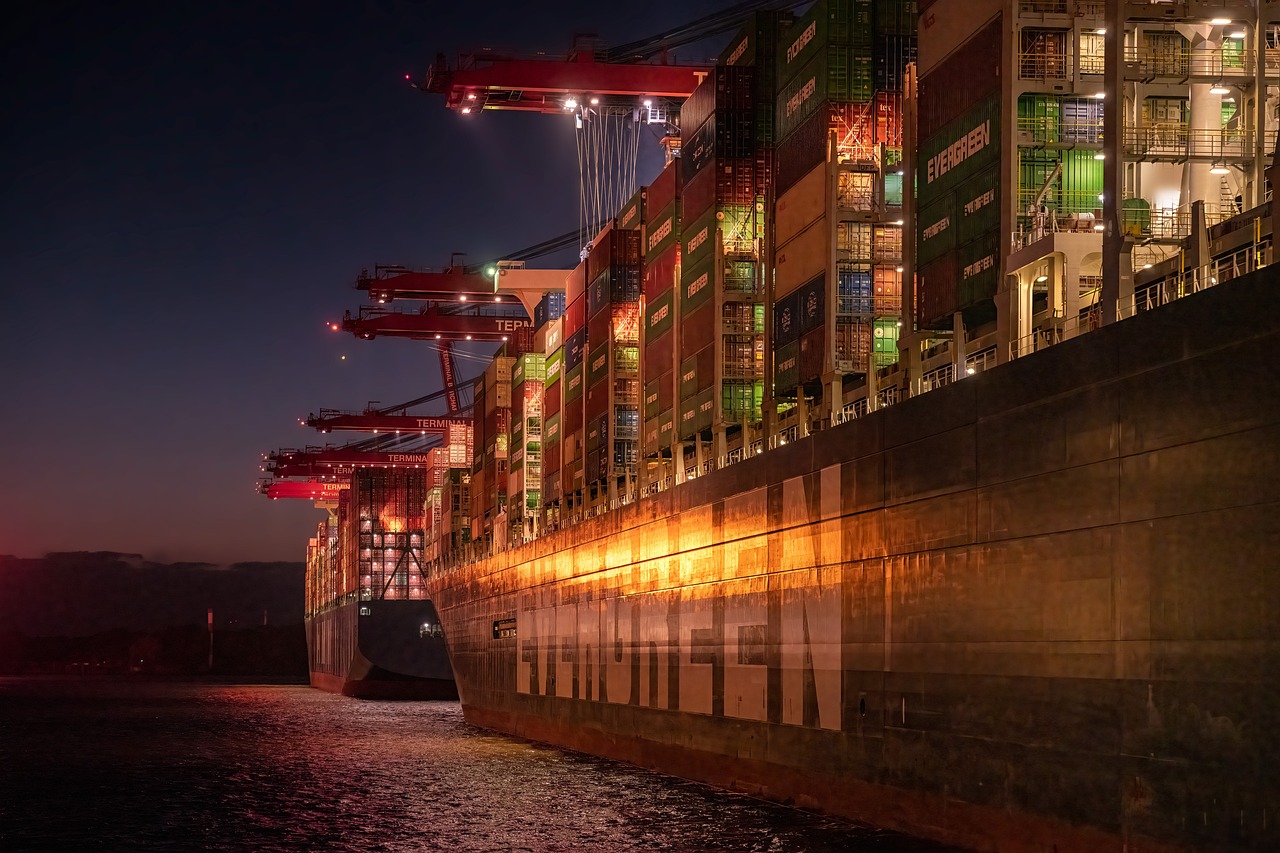
Air Pollution from Cruise Ships
Cruise ships are often seen as floating cities, offering luxurious experiences on the open water. However, beneath the surface of this glamorous lifestyle lies a significant environmental concern: air pollution. These massive vessels contribute to air quality issues by emitting a cocktail of harmful gases, including sulfur oxides (SOx) and nitrogen oxides (NOx), which are primarily produced by their heavy fuel oil engines. Just imagine standing on a beautiful deck, sipping a cocktail, while the air around you is being tainted by these pollutants. It’s a stark contradiction that many do not realize.
The sources of these emissions are not just limited to the engines themselves. Cruise ships also rely on auxiliary engines for power while in port, which adds to the overall pollution footprint. According to estimates, a single cruise ship can emit as much SOx in one day as 13 million cars. This staggering figure raises questions about the sustainability of such tourism practices. What are we willing to sacrifice for a few days of leisure?
The impact of these emissions extends beyond just the immediate vicinity of the cruise ships. Airborne pollutants can travel long distances, affecting communities far from the coast. For instance, the World Health Organization has linked air pollution to serious health issues, including respiratory problems and cardiovascular diseases. This means that the air quality in port cities can deteriorate significantly, putting local populations at risk. Isn’t it ironic that while tourists enjoy their vacation, the locals may suffer from the very activities that fuel the tourism economy?
To combat these issues, various measures are being implemented. Many cruise lines are investing in cleaner technologies, such as liquefied natural gas (LNG) engines, which can significantly reduce SOx and NOx emissions. Additionally, some ships are now equipped with scrubbers that clean exhaust gases before they are released into the atmosphere. However, the effectiveness of these technologies often depends on the regulations enforced in different regions. It’s a classic case of “you can lead a horse to water, but you can’t make it drink.”
In conclusion, while cruise ships provide unforgettable experiences, their contribution to air pollution cannot be overlooked. The balance between enjoying the beauty of the oceans and protecting our air quality is delicate. As travelers, we must ask ourselves: how can we enjoy these experiences while ensuring that we are not compromising the health of our planet and its inhabitants?
- What are the main pollutants emitted by cruise ships? Cruise ships primarily emit sulfur oxides (SOx) and nitrogen oxides (NOx) from their engines, which can contribute to air quality issues.
- How do cruise ships affect local air quality? The emissions from cruise ships can travel long distances, negatively impacting air quality in port cities and posing health risks to local communities.
- Are there any regulations in place to control cruise ship emissions? Yes, there are various international and local regulations aimed at controlling emissions from cruise ships, but enforcement and effectiveness can vary.
- What technologies are being used to reduce emissions from cruise ships? Many cruise lines are investing in cleaner technologies, such as liquefied natural gas (LNG) engines and exhaust gas cleaning systems (scrubbers).
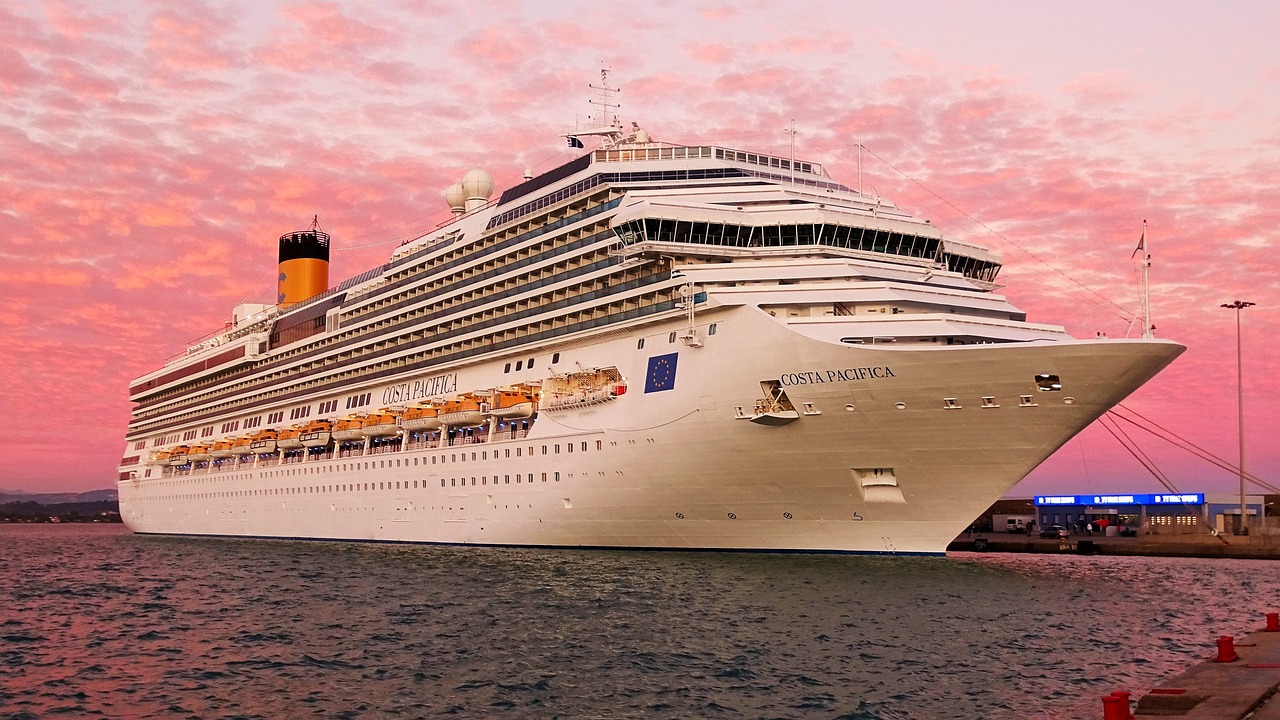
Water Pollution Concerns
When we think of cruise ships, we often picture luxurious vacations, breathtaking ocean views, and vibrant ports of call. However, lurking beneath this shiny surface is a troubling reality: the discharge of wastewater and sewage from these floating cities poses a serious threat to our precious marine environments. Every year, millions of gallons of wastewater are released into the ocean, containing a cocktail of pollutants that can wreak havoc on aquatic life and ecosystems. This is not just a minor issue; it’s a significant environmental challenge that demands our attention.
So, what exactly is in this wastewater? It includes a variety of harmful substances such as nutrients (like nitrogen and phosphorus), heavy metals, and pathogens. When these pollutants enter the water, they can lead to a myriad of problems:
- Eutrophication: Excess nutrients can cause algal blooms, which deplete oxygen in the water and create dead zones where marine life cannot survive.
- Bioaccumulation: Heavy metals can accumulate in the tissues of marine organisms, making their way up the food chain and potentially affecting human health.
- Spread of Diseases: Pathogens in untreated sewage can harm marine species and pose risks to human health, especially for those who consume seafood.
The impact of these pollutants extends beyond just the immediate area around cruise ships. As currents carry these toxins, they can affect larger regions, disrupting entire ecosystems. For instance, coral reefs, which are already vulnerable due to climate change, are particularly sensitive to water quality changes. If the water becomes too polluted, it can lead to coral bleaching, threatening the biodiversity that depends on these ecosystems.
Moreover, cruise ships often operate in sensitive marine environments, like the Caribbean and Mediterranean. These areas are not only tourist hotspots but also crucial habitats for various species. The influx of cruise ships increases the risk of pollution, making it essential for us to address these concerns. But how do we tackle this issue?
One of the critical aspects of water pollution from cruise ships is the management of ballast water. This water is taken on board to stabilize ships and is often discharged in different locations, which can introduce invasive species to new environments. Invasive species can outcompete native species, leading to significant ecological imbalances. To combat this, regulations have been put in place to manage ballast water effectively.
Various international and local regulations, such as the International Maritime Organization's Ballast Water Management Convention, aim to mitigate these risks. These regulations require ships to treat ballast water before discharge, ensuring that it meets specific standards. However, the effectiveness of these regulations often hinges on enforcement and compliance, which can vary significantly from one region to another.
Fortunately, emerging technologies offer hope for reducing the ecological impact of cruise ships. Advanced ballast water treatment systems are being developed that can effectively filter out harmful organisms before the water is released back into the ocean. These innovations not only help protect local biodiversity but also pave the way for more sustainable cruise tourism practices.
In conclusion, while cruise ships may provide enjoyable experiences for travelers, we must remain vigilant about their environmental impact, especially concerning water pollution. By understanding the sources and consequences of these pollutants, we can advocate for better regulations, support innovative solutions, and ultimately protect our marine ecosystems for future generations.
- What types of pollutants are found in cruise ship wastewater? Cruise ship wastewater can contain nutrients, heavy metals, and pathogens that can harm marine ecosystems.
- How does ballast water contribute to environmental issues? Ballast water can introduce invasive species to new environments, disrupting local ecosystems and biodiversity.
- What regulations exist for managing ballast water? The International Maritime Organization has established the Ballast Water Management Convention to set standards for treating ballast water before discharge.
- Are there any innovative solutions for reducing water pollution from cruise ships? Yes, advanced ballast water treatment systems are being developed to filter out harmful organisms and minimize ecological impact.
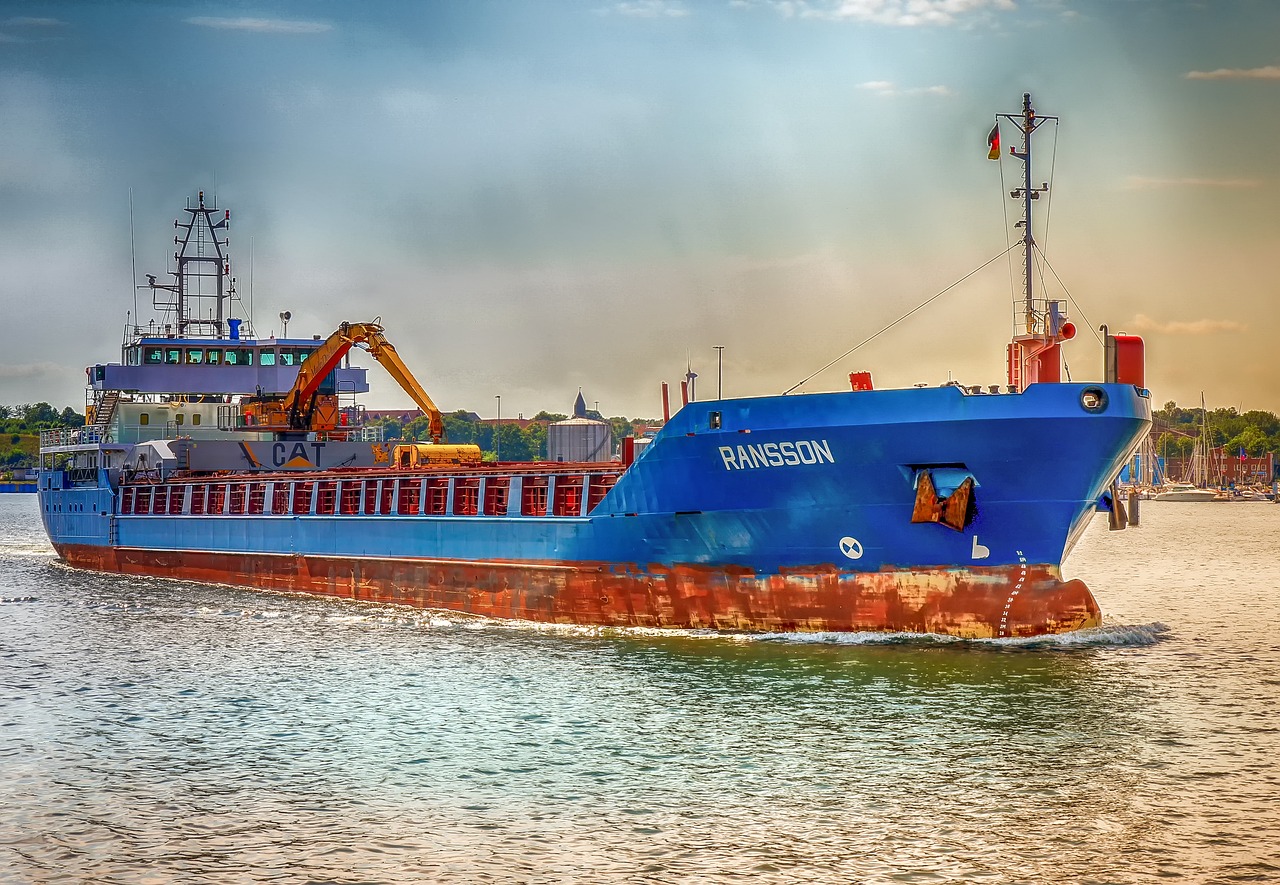
Ballast Water Management
Ballast water management is a critical aspect of mitigating the environmental impact of cruise ships. As these massive vessels navigate the world's oceans, they take on and discharge ballast water to maintain stability and balance. However, this seemingly benign practice can lead to severe ecological consequences. When cruise ships take on water in one location and release it in another, they can inadvertently introduce invasive species to new environments. These species can outcompete local flora and fauna, disrupting the delicate balance of marine ecosystems.
To combat these issues, various regulations and technologies have been developed to manage ballast water effectively. The International Maritime Organization (IMO) has established guidelines that require ships to treat ballast water before discharge. This treatment can involve physical, chemical, or biological methods aimed at killing or removing harmful organisms. The goal is to ensure that the water released poses minimal risk to local biodiversity.
One of the primary regulations in place is the Ballast Water Management Convention, which came into force in 2017. This convention mandates that ships must implement a ballast water management plan and maintain records of ballast water operations. Compliance is monitored through inspections, and vessels that fail to adhere to these regulations can face hefty fines and restrictions.
Emerging technologies are also playing a significant role in improving ballast water management. For instance, some cruise lines are investing in advanced treatment systems that utilize ultraviolet (UV) light or ozonation to sterilize ballast water before it is discharged. These innovative solutions not only help in reducing the introduction of invasive species but also enhance the overall sustainability of cruise operations.
| Technology | Method | Effectiveness |
|---|---|---|
| Ultraviolet Light | Disinfects water using UV radiation | High |
| Ozonation | Uses ozone to kill microorganisms | Very High |
| Filtration Systems | Physically removes organisms from water | Moderate to High |
Despite these advancements, challenges remain in the enforcement of ballast water regulations. Many countries lack the resources to conduct thorough inspections, and there are discrepancies in how regulations are applied across different jurisdictions. This inconsistency can create loopholes that allow non-compliant vessels to operate without facing consequences. As cruise tourism continues to grow, it is essential for international cooperation to enhance the effectiveness of ballast water management practices.
In conclusion, effective ballast water management is not just a regulatory requirement but a crucial step towards protecting marine biodiversity. By investing in innovative technologies and adhering to international guidelines, the cruise industry can significantly reduce its ecological footprint and contribute to the preservation of our oceans.
- What is ballast water, and why is it important?
Ballast water is water taken on by ships to maintain stability. It's crucial for safe navigation but can introduce invasive species if not managed properly. - What are the consequences of invasive species?
Invasive species can disrupt local ecosystems, outcompete native species, and lead to significant ecological and economic damage. - How do ships treat ballast water?
Ships can treat ballast water using various methods, including UV light, ozonation, and filtration systems, to kill or remove harmful organisms before discharge. - Are there regulations for ballast water management?
Yes, the International Maritime Organization has established the Ballast Water Management Convention, which sets guidelines for how ships should manage ballast water.
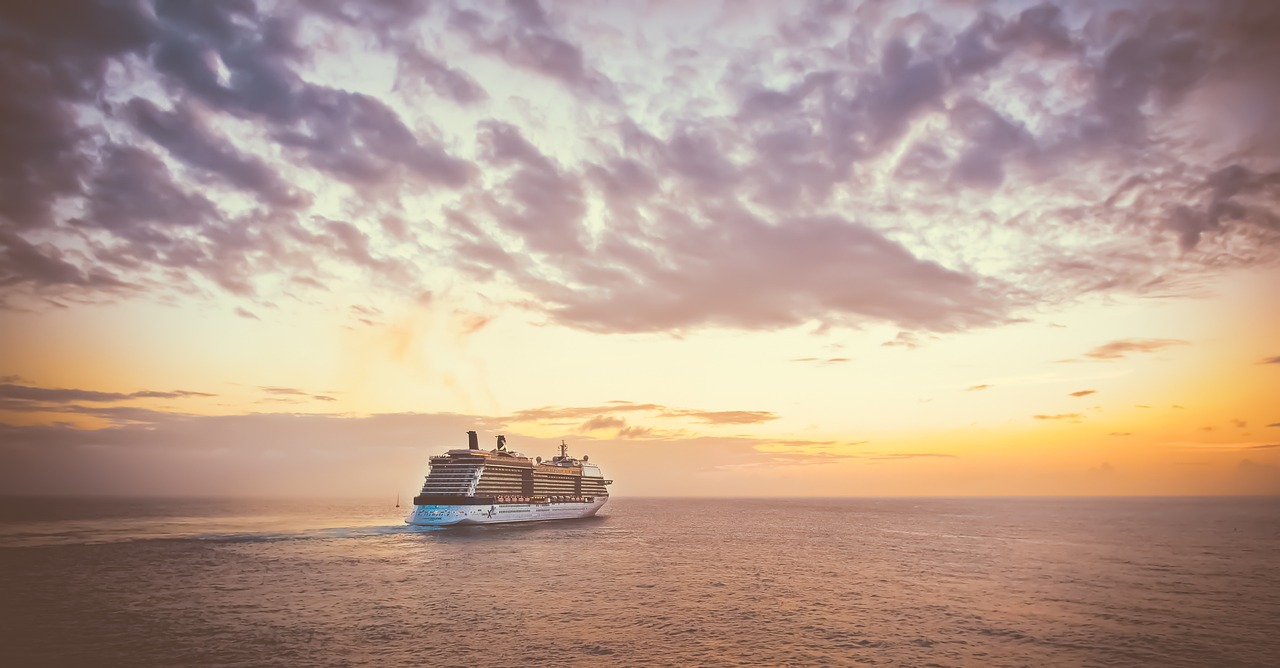
Regulatory Framework
The regulatory framework surrounding ballast water management is a complex web of international and local laws designed to mitigate the environmental risks posed by cruise ships. These regulations are essential for protecting marine biodiversity and ensuring that invasive species do not disrupt local ecosystems. At the international level, the International Maritime Organization (IMO) has established the Ballast Water Management Convention, which sets out mandatory requirements for the management and treatment of ballast water. This convention aims to minimize the transfer of harmful aquatic organisms and pathogens through ship ballast water.
However, the effectiveness of these regulations can vary significantly from one region to another. Many countries have adopted additional measures tailored to their specific environmental contexts. For instance, some regions have implemented stricter discharge standards, requiring ships to treat their ballast water before releasing it into local waters. This can include the use of advanced filtration systems and chemical treatments that eliminate invasive species. Despite these efforts, enforcement remains a challenge. Many cruise ships operate in international waters where regulations may not be as strictly enforced, leading to potential loopholes that can jeopardize local ecosystems.
To illustrate the differences in regulatory approaches, consider the following table that outlines key aspects of ballast water regulations in various regions:
| Region | Regulatory Body | Key Regulations |
|---|---|---|
| International | International Maritime Organization (IMO) | Ballast Water Management Convention |
| United States | Environmental Protection Agency (EPA) | Vessel General Permit (VGP) |
| European Union | European Maritime Safety Agency (EMSA) | EU Ballast Water Management Directive |
Moreover, the advancements in technology have led to the development of innovative solutions that enhance compliance with these regulations. For example, many cruise lines are investing in ballast water treatment systems that utilize ultraviolet light or electrolysis to disinfect water before it is discharged. These systems not only help ships meet regulatory standards but also significantly reduce their ecological footprint.
In conclusion, while the regulatory framework for ballast water management is robust, ongoing challenges in enforcement and compliance persist. It is crucial for stakeholders, including governments, shipping companies, and environmental organizations, to collaborate and strengthen these regulations. By doing so, they can better protect marine ecosystems from the threats posed by cruise ships and ensure a sustainable future for our oceans.
- What is ballast water? Ballast water is water taken on board ships to provide stability. It is often taken from one environment and discharged in another, which can introduce invasive species.
- Why is ballast water management important? Proper management is essential to prevent the transfer of harmful organisms that can disrupt local ecosystems and threaten marine biodiversity.
- What technologies are used for ballast water treatment? Technologies include filtration systems, ultraviolet light, and chemical treatments that help eliminate invasive species before discharge.
- Are there penalties for non-compliance with ballast water regulations? Yes, ships that fail to comply with ballast water regulations can face significant fines and restrictions on their operations.
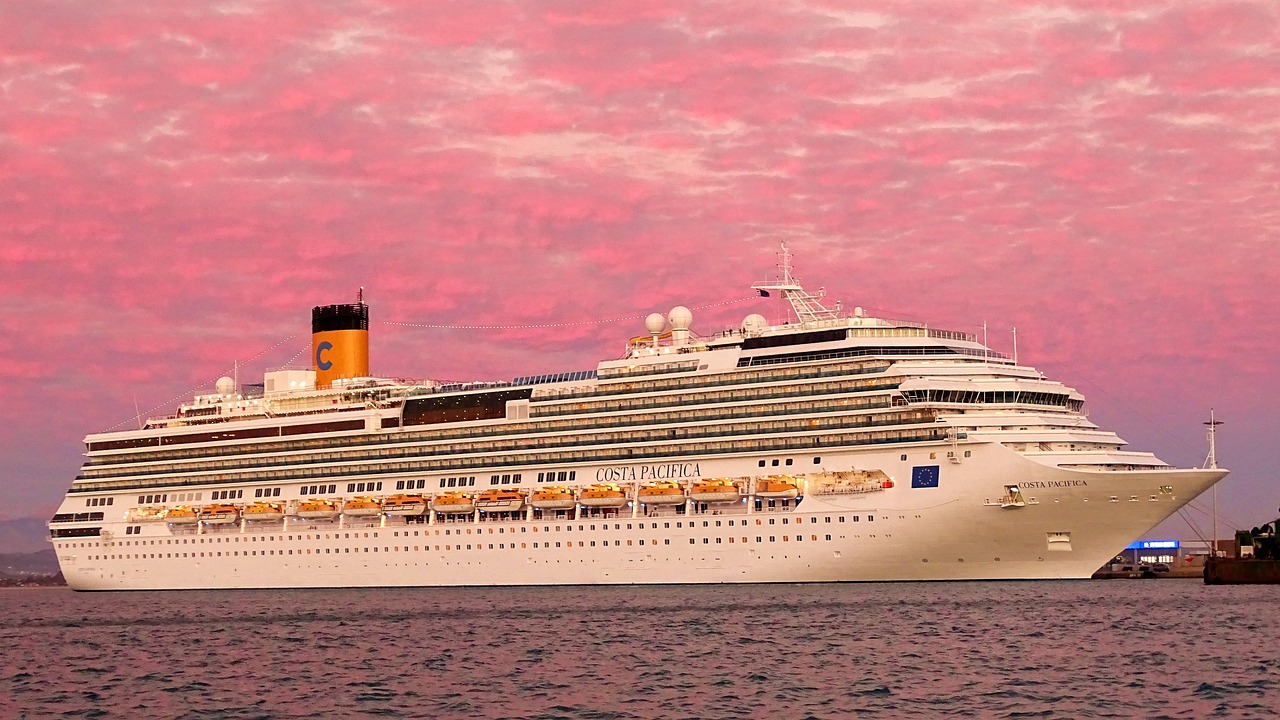
Innovative Solutions
The cruise industry is increasingly recognizing its environmental responsibilities and is actively seeking to mitigate its ecological impact. One of the most promising areas of development is in the realm of advanced wastewater treatment technologies. These systems are designed to ensure that any wastewater discharged from cruise ships meets stringent environmental standards, effectively reducing the amount of harmful pollutants entering our oceans. For instance, some ships are now equipped with membrane bioreactors that not only treat sewage but also recycle water for use onboard, minimizing freshwater consumption.
Moreover, the adoption of liquid natural gas (LNG) as a fuel source is gaining traction. LNG is significantly cleaner than traditional marine fuels, emitting lower levels of sulfur oxides and nitrogen oxides. This transition not only improves air quality but also aligns with global efforts to combat climate change. As more cruise lines invest in LNG-powered vessels, we can expect a substantial reduction in air pollution from the industry.
Another innovative approach involves the use of ballast water treatment systems. These systems are critical in preventing the transfer of invasive species from one marine environment to another. By utilizing advanced filtration and ultraviolet light technologies, these systems effectively kill or remove harmful organisms before ballast water is discharged. This not only protects local ecosystems but also helps maintain biodiversity in vulnerable areas.
Additionally, the cruise industry is exploring renewable energy sources to power onboard operations. From solar panels to wind turbines, these technologies can significantly reduce the reliance on fossil fuels. By harnessing the power of the sun and wind, cruise ships can operate more sustainably, reducing their overall carbon footprint. Some ships are even experimenting with energy storage systems that allow them to store excess energy generated during peak production times for use when needed.
Despite these advancements, the implementation of such technologies is not without challenges. The initial costs of upgrading fleets and retrofitting existing ships can be substantial. However, the long-term benefits—both environmental and economic—far outweigh these initial investments. As the industry continues to evolve, it is crucial for stakeholders to collaborate on creating effective regulatory frameworks that support these innovations while ensuring compliance with environmental standards.
In conclusion, the cruise industry is on the brink of a revolution in how it approaches environmental sustainability. By investing in innovative solutions such as advanced wastewater treatment, LNG propulsion, ballast water management systems, and renewable energy sources, cruise lines are taking significant steps towards reducing their ecological footprint. The journey toward a more sustainable cruise experience is just beginning, and it holds the promise of a healthier planet for future generations.
- What are the main environmental impacts of cruise ships? Cruise ships primarily contribute to air and water pollution, disrupt marine ecosystems, and generate significant waste.
- How do cruise ships manage their waste? Many cruise ships are now equipped with advanced waste management systems that treat and recycle waste onboard to minimize environmental impact.
- What technologies are being used to reduce emissions from cruise ships? Technologies such as liquid natural gas (LNG) engines, advanced wastewater treatment systems, and renewable energy sources are being adopted to reduce emissions.
- How can I choose a more environmentally friendly cruise? Look for cruise lines that prioritize sustainability, use cleaner fuels, and have strong waste management practices in place.
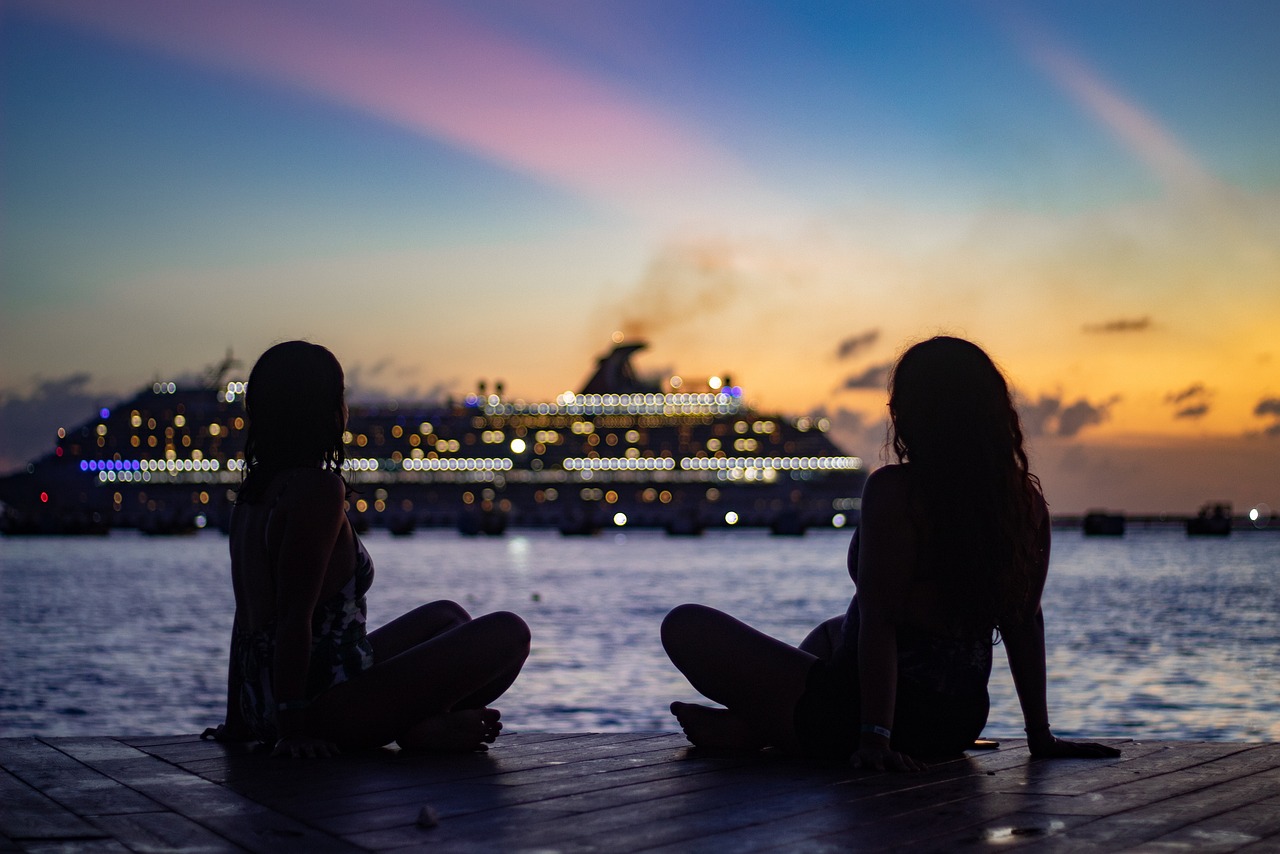
Waste Management Practices
When it comes to cruise ships, waste management is a critical issue that demands our attention. These floating cities generate a staggering amount of waste, ranging from food scraps to hazardous materials. The sheer volume of waste produced on board can be overwhelming, and if not managed properly, it can lead to severe environmental consequences. Effective waste management practices are essential to minimizing the ecological footprint of these vessels and ensuring that they do not harm the marine environments they visit.
One of the primary challenges that cruise ships face is the disposal of solid waste. This includes everything from packaging materials to leftover food. Many cruise lines have implemented recycling programs to address this issue, but the effectiveness of these programs can vary significantly. For instance, while some ships may recycle up to 50% of their waste, others may struggle to reach even 10%. The inconsistency in waste management practices across different cruise lines highlights the need for standardized regulations and practices that ensure all vessels operate at a high environmental standard.
Another significant concern is the management of hazardous waste, which includes items like batteries, paints, and chemicals used for cleaning and maintenance. Improper disposal of these materials can lead to toxic pollution in the oceans, posing risks to both marine life and human health. To combat this, many cruise companies are now adopting comprehensive waste management systems that include specialized training for crew members on how to handle and dispose of hazardous materials safely.
Moreover, the treatment of liquid waste—which encompasses sewage and gray water—has become a focal point for environmental regulations. Cruise ships are required to treat their wastewater before discharging it into the ocean. However, the technologies used for this treatment can vary widely, with some ships utilizing advanced systems that meet or exceed international standards, while others may still rely on outdated methods. This disparity underscores the importance of continuous investment in innovative waste treatment technologies that can help protect marine ecosystems.
To illustrate the impact of waste management practices, consider the following table that outlines the types of waste generated by cruise ships and their potential environmental impacts:
| Type of Waste | Potential Environmental Impact |
|---|---|
| Food Waste | Attracts pests, contributes to nutrient pollution |
| Sewage | Can cause eutrophication, harmful algal blooms |
| Hazardous Waste | Toxic pollution, harm to marine life |
| Plastic Waste | Ingestion by marine animals, ocean pollution |
In conclusion, while cruise ships offer incredible experiences for travelers, they also pose significant challenges regarding waste management. The industry must prioritize sustainable practices and invest in innovative technologies to reduce their environmental footprint. After all, we owe it to our oceans and the communities that depend on them to ensure that cruise tourism is not just about exploration, but also about responsibility and stewardship of our planet.
- What types of waste do cruise ships generate? Cruise ships generate various types of waste, including food waste, sewage, hazardous materials, and plastic waste.
- How do cruise ships manage their waste? Many cruise lines implement recycling programs, treat liquid waste, and provide specialized training for crew members to ensure proper waste disposal.
- Are there regulations governing waste management on cruise ships? Yes, there are international and local regulations that govern waste management practices on cruise ships, but enforcement can vary.
- What are the environmental impacts of cruise ship waste? Improper waste management can lead to pollution, harm marine life, and disrupt local ecosystems.
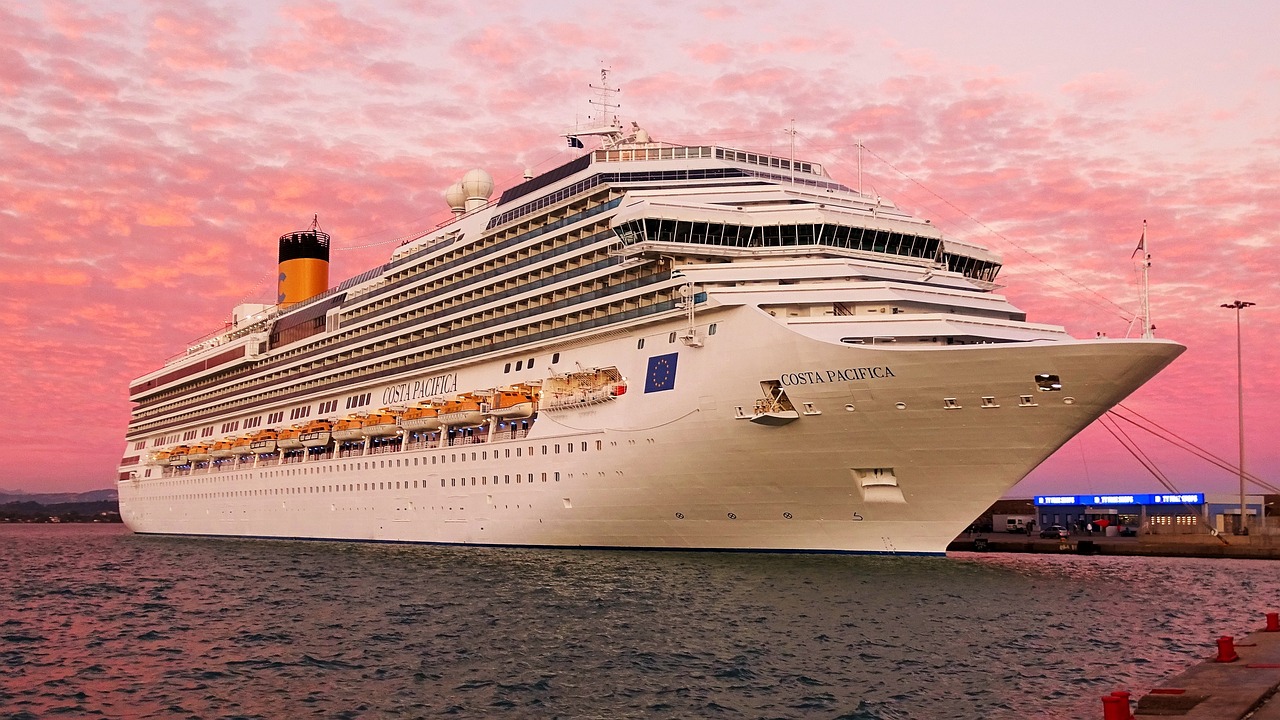
Impact on Marine Biodiversity
The impact of cruise ships on marine biodiversity is a pressing concern that cannot be overlooked. As these floating cities traverse the world's oceans, they leave behind a trail of environmental implications that ripple through marine ecosystems. From the moment a cruise ship docks in a pristine harbor, the potential for disruption begins. The sheer size of these vessels means they can have a significant footprint, affecting everything from local wildlife to delicate habitats.
One of the most alarming consequences of increased cruise traffic is the direct threat to marine species. Cruise ships often operate in biodiverse areas, such as coral reefs and coastal ecosystems, which are already stressed by climate change and human activities. The introduction of noise pollution from engines and recreational activities can disrupt the natural behaviors of marine life, including mating and feeding patterns. For instance, whales and dolphins, known for their reliance on echolocation, may find it increasingly challenging to communicate and navigate in noisy waters.
Moreover, the risk of oil spills and other hazardous material leaks poses a direct threat to marine biodiversity. A single incident can devastate local ecosystems, leading to the death of fish, birds, and other marine creatures. The long-term effects of such spills can linger for years, disrupting food chains and leading to a decline in species populations. According to recent studies, areas frequently visited by cruise ships show a marked decrease in certain fish populations, raising alarms among conservationists.
Another critical aspect to consider is the waste generated by cruise ships. These vessels produce a staggering amount of waste, including sewage, food waste, and hazardous materials. While regulations exist to manage waste disposal, enforcement is often lax, and many ships find loopholes to avoid proper treatment. The discharge of untreated sewage can lead to nutrient pollution, causing algal blooms that suffocate marine life and disrupt the balance of ecosystems. For example, in areas where cruise ships frequently dock, scientists have observed a rise in harmful algal blooms, which can produce toxins detrimental to both marine life and human health.
To better understand the impact of cruise ships on marine biodiversity, consider the following table that outlines some key statistics:
| Impact Type | Details |
|---|---|
| Noise Pollution | Disrupts communication and navigation for marine mammals. |
| Oil Spills | Can lead to long-term ecological damage and species decline. |
| Waste Discharge | Contributes to nutrient pollution and harmful algal blooms. |
| Invasive Species | Ballast water can introduce non-native species, disrupting local ecosystems. |
In conclusion, the impact of cruise ships on marine biodiversity is multifaceted and significant. While cruise tourism can provide economic benefits to local communities, the environmental costs can be staggering. It is imperative that both the cruise industry and regulatory bodies take proactive measures to mitigate these impacts. Sustainable practices, such as improved waste management and adherence to strict environmental regulations, are essential for protecting our oceans and the incredible biodiversity they harbor.
- What are the main environmental impacts of cruise ships? Cruise ships contribute to air and water pollution, waste generation, and the introduction of invasive species, all of which can harm marine ecosystems.
- How do cruise ships affect marine wildlife? The noise and pollution from cruise ships can disrupt communication, feeding, and breeding patterns among marine species, leading to population declines.
- What regulations exist to protect marine biodiversity from cruise ships? Various international and local regulations aim to manage waste discharge and ballast water to minimize environmental risks, but enforcement can be inconsistent.
- Are there any sustainable practices being implemented in the cruise industry? Yes, many cruise lines are adopting greener technologies, improving waste management systems, and committing to environmental stewardship to reduce their impact.
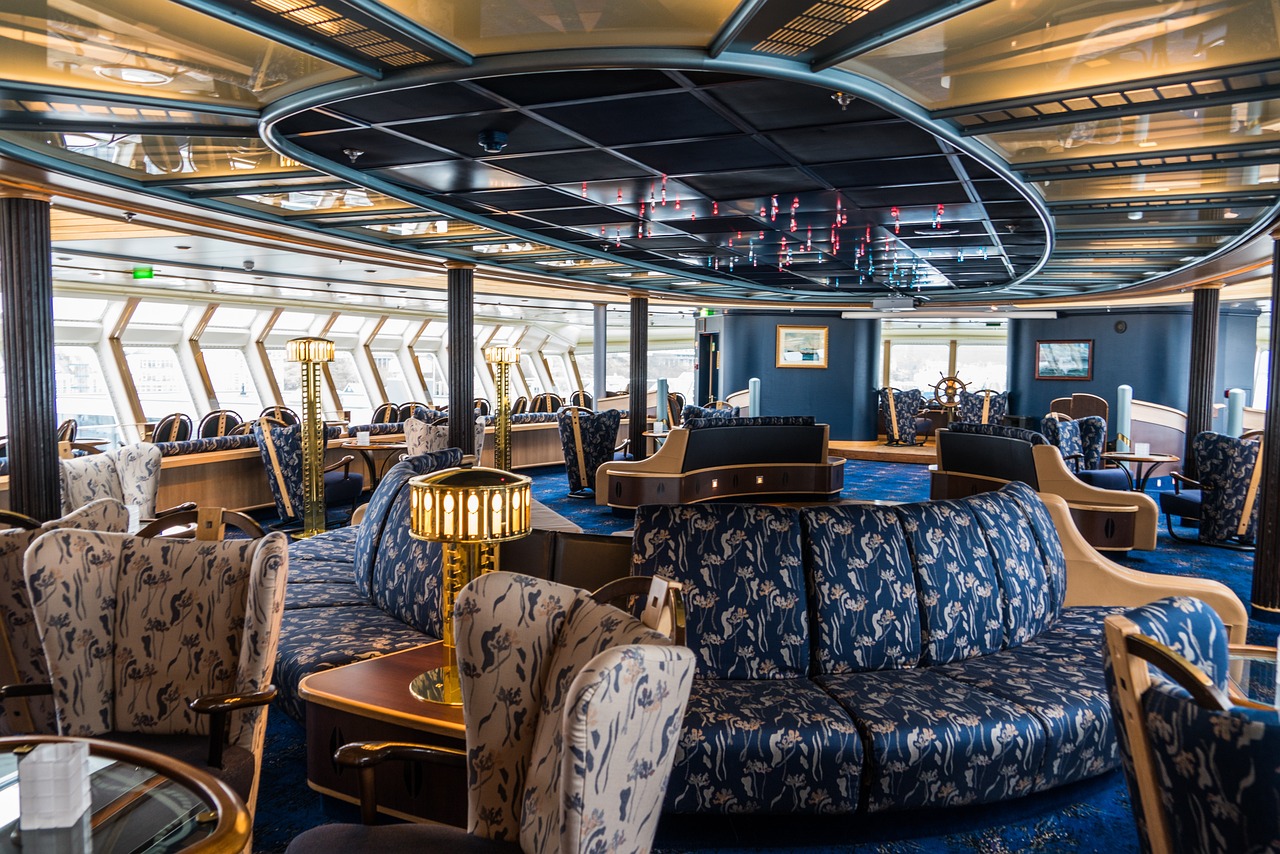
Coral Reefs and Ecosystems
Coral reefs are often referred to as the "rainforests of the sea" due to their incredible biodiversity and the vital roles they play in marine ecosystems. However, the increasing presence of cruise ships in these delicate environments poses a significant threat. As these massive vessels glide through the waters, they can inadvertently damage coral reefs through physical disturbances, pollution, and the introduction of invasive species. Just imagine a bustling city plopped down in the middle of a serene forest; the noise, the chaos, and the destruction would be catastrophic. That’s essentially what happens when cruise ships anchor near coral reefs.
One of the most pressing issues is the physical damage caused by ships anchoring too close to coral reefs. The anchors can crush and uproot corals, which can take decades to recover. In some cases, entire sections of reefs can be destroyed, leading to a loss of habitat for countless marine species. Moreover, the increased sedimentation from disturbed seabeds can smother corals, blocking their access to sunlight, which is crucial for their survival.
Another significant concern is water pollution. Cruise ships often discharge wastewater, sewage, and oily bilge water into the ocean, which can lead to nutrient overloads. This nutrient influx can cause algal blooms, which compete with corals for space and resources, ultimately leading to coral bleaching. When corals become stressed due to these conditions, they expel the symbiotic algae living in their tissues, which provide them with energy through photosynthesis. Without these algae, corals turn white and are more susceptible to disease and mortality.
Furthermore, the introduction of invasive species through ballast water can disrupt local ecosystems. When cruise ships take on ballast water in one location and discharge it in another, they can inadvertently introduce non-native species that outcompete local marine life. This can lead to a cascade of ecological changes, further endangering the already vulnerable coral reefs.
To illustrate the impact of cruise ships on coral reefs, consider the following table:
| Impact Type | Description | Consequences |
|---|---|---|
| Physical Damage | Anchors and hulls damaging coral structures | Loss of habitat, increased vulnerability |
| Water Pollution | Discharge of sewage and chemicals | Algal blooms, coral bleaching |
| Invasive Species | Introduction of non-native marine organisms | Disruption of local ecosystems |
In conclusion, the relationship between cruise ships and coral reefs is a precarious one. While cruise tourism can provide economic benefits to local communities, it is essential to recognize the environmental costs associated with it. Protecting coral reefs is not just about preserving beauty; it’s about maintaining the health of our oceans and the myriad of life they support. As travelers, we must advocate for sustainable practices that minimize the impact of cruise ships on these vital ecosystems. Awareness and action can help ensure that coral reefs continue to thrive for generations to come.
- What are coral reefs? Coral reefs are underwater structures made from calcium carbonate secreted by corals, providing habitat for a diverse range of marine life.
- How do cruise ships impact coral reefs? Cruise ships can physically damage reefs, pollute the water, and introduce invasive species, all of which threaten coral health and biodiversity.
- What can be done to protect coral reefs from cruise ships? Implementing stricter regulations on anchoring, waste management, and ballast water treatment can help protect these ecosystems.
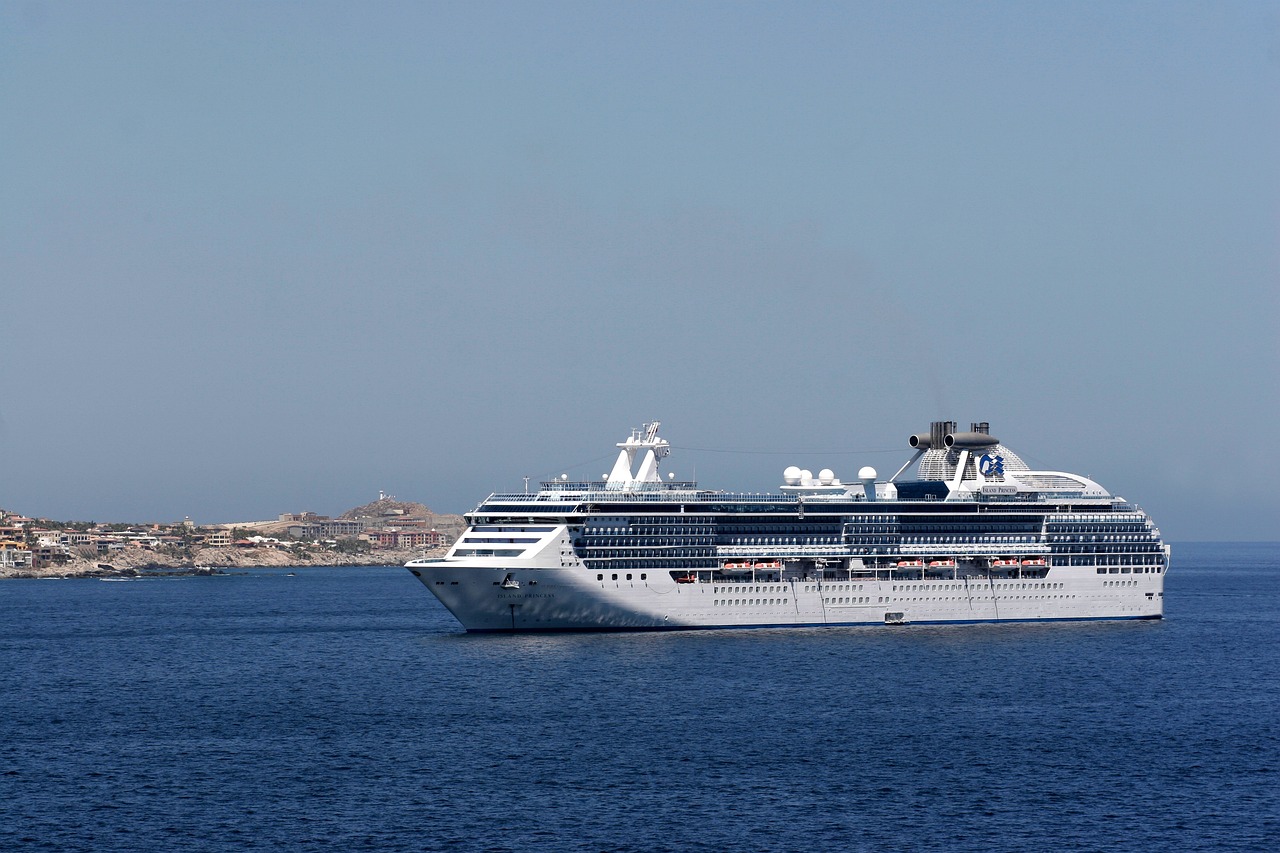
Local Community Effects
The presence of cruise ships in a destination can be a double-edged sword for local communities. On one hand, they bring a surge of tourists eager to explore the local culture, cuisine, and attractions, which can lead to a significant economic boost. Local businesses, from souvenir shops to restaurants, often see a spike in sales when cruise ships dock. In fact, studies indicate that cruise tourism can contribute millions to local economies, creating jobs and supporting livelihoods. However, this influx of visitors can also create challenges that communities must navigate.
As the number of cruise ships increases, so does the strain on local infrastructure. Many ports are not equipped to handle the large volumes of passengers disembarking. This can lead to overcrowding in popular tourist areas, diminishing the quality of the visitor experience and potentially frustrating residents. Moreover, the environmental impact of these ships can affect the very resources that attract tourists in the first place, such as pristine beaches and vibrant marine life.
Local communities also face the challenge of balancing economic benefits with environmental sustainability. The increase in waste and pollution from cruise ships can compromise the health of local ecosystems. For instance, if a cruise ship discharges untreated wastewater, it can lead to water contamination, affecting fishing, swimming, and other recreational activities that locals rely on. In some cases, this has resulted in community pushback against cruise tourism, as residents advocate for stricter regulations to protect their environment.
Furthermore, the cultural impact of cruise tourism cannot be overlooked. While increased tourism can lead to cultural exchange, it can also result in the commodification of local traditions and heritage. Local artisans might feel pressured to cater to tourist demands, sometimes at the expense of authenticity. This can dilute cultural practices and create a disconnect between residents and their own heritage.
To illustrate the economic and environmental impacts, consider the following table:
| Impact Type | Positive Effects | Negative Effects |
|---|---|---|
| Economic | Increased sales for local businesses, job creation | Overdependence on tourism, seasonal fluctuations |
| Environmental | Potential funding for conservation efforts | Pollution, habitat destruction |
| Cultural | Promotion of local arts and crafts | Commodification of culture, loss of authenticity |
In conclusion, while cruise tourism can provide significant economic benefits to local communities, it is essential for these communities to adopt a holistic approach that considers both the positive and negative impacts. Engaging in sustainable practices and involving local stakeholders in decision-making can help ensure that the benefits of cruise tourism are maximized while minimizing detrimental effects on the environment and local culture.
- What are the main economic benefits of cruise tourism for local communities?
Local communities often experience increased sales in shops and restaurants, job creation, and potential funding for community projects. - How does cruise tourism impact the environment?
Cruise ships can contribute to water and air pollution, habitat destruction, and increased waste, which can threaten local ecosystems. - What measures can communities take to mitigate negative effects?
Communities can implement stricter regulations, promote sustainable tourism practices, and engage local stakeholders in planning processes.
Frequently Asked Questions
-
What are the main environmental impacts of cruise ships?
Cruise ships have a significant environmental footprint, primarily through air and water pollution. They emit harmful substances like sulfur oxides and nitrogen oxides, which contribute to air quality degradation and can affect public health. Additionally, the discharge of wastewater and sewage poses serious threats to marine ecosystems, endangering aquatic life and habitats.
-
How do cruise ships contribute to air pollution?
Cruise ships burn heavy fuel oil, which releases sulfur and nitrogen oxides into the atmosphere. This not only leads to poor air quality but can also contribute to acid rain and respiratory problems in nearby communities. The sheer size and number of cruise ships exacerbate this issue, making it a pressing concern for environmentalists.
-
What types of water pollution are associated with cruise ships?
Cruise ships can discharge various pollutants, including untreated sewage, greywater, and hazardous waste. These discharges can introduce harmful chemicals and pathogens into marine environments, disrupting ecosystems and threatening marine biodiversity. The consequences can be dire for local fisheries and wildlife.
-
What is ballast water, and why is it a concern?
Ballast water is water taken on by ships to maintain stability. When cruise ships take on ballast water in one location and discharge it in another, they can unintentionally introduce invasive species, which can disrupt local ecosystems. This is a significant concern for biodiversity and the health of marine habitats.
-
Are there regulations for managing ballast water?
Yes, there are several international and local regulations aimed at managing ballast water to protect marine biodiversity. These regulations often require ships to treat ballast water before discharge to minimize the risk of introducing invasive species. However, enforcement and compliance can vary significantly.
-
What innovative solutions are being developed for waste management?
Emerging technologies are focusing on more efficient waste management practices for cruise ships. Solutions include advanced wastewater treatment systems and waste-to-energy technologies that can significantly reduce the environmental impact of waste disposal at sea.
-
How do cruise ships affect marine biodiversity?
The presence of cruise ships can have profound effects on marine biodiversity. Increased traffic can lead to habitat destruction, disturbance of wildlife, and pollution. Coral reefs, in particular, are vulnerable, as cruise activities can cause physical damage and contribute to water quality issues.
-
What are the economic impacts of cruise tourism on local communities?
Cruise tourism can bring economic benefits to local communities, such as job creation and increased business for local vendors. However, these benefits can come at the cost of environmental degradation, which may affect long-term sustainability. Balancing economic gains with environmental protection is crucial for community well-being.



















